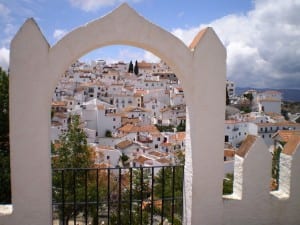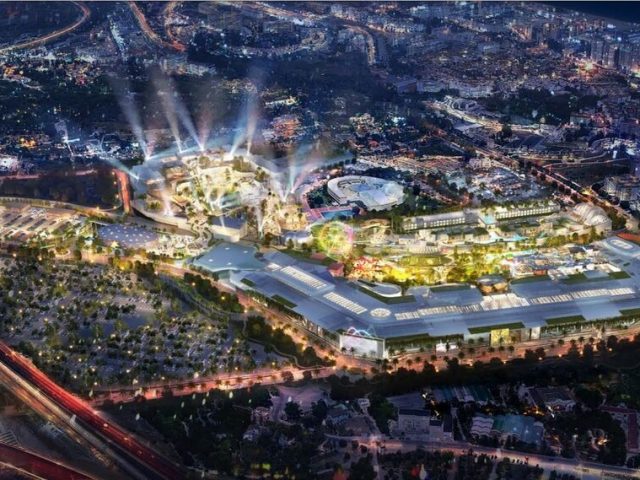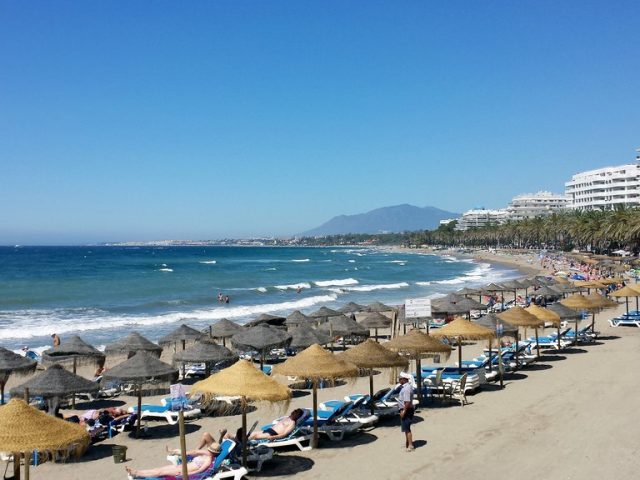- Have any questions?
- +34 951 273 575
- info@allaboutandalucia.com
Road trip through the Axarquia from Nerja to Comares

Christmas in Ronda
November 22, 2015Comares: Balcony of the Axarquia
December 15, 2015TIGHT clusters of brilliant-white cubes huddle into the cliff face.

COME UP AND SEE: Exqisite hilltop village of Comares
As I round the corners, the sight of each Moorish village is even more impressive than the last. It’s becoming increasingly difficult to stop gazing out of the window and keep my eyes on the road.
It’s a different world and yet, unbelievably, the jaw-dropping landscapes are just a stone’s throw from the tourist hotspots of Nerja and Torre del Mar.
Glancing in the rearview mirror, I can still see the glistening Mediterranean sea I’d left behind just 20 minutes earlier.
While Nerja’s beaches attract thousands of tourists, and the region’s capital, Velez-Malaga, draws business to the area, there is nothing quite as breathtaking as a climb up to the emblematic village of Comares or into the sierras of Alhama, Tejada and Almijara.
As retired British expat, Stephen Pager tells me when I stop off in Sayalonga: “These mountains are full of character.
“Nerja is great for tourists, ice cream and beaches, but the real beauty of the Axarquia, the reason I moved here to retire, is the hills.”
Some of Andalucia’s loveliest towns and villages – Sedella, Competa and Frigiliana – are hidden away in this region’s hills.
In fact there are so many beautiful places to see that you need a good few days to explore them all.
But my first port of call isn’t quite so rural. In fact, Velez-Malaga, as I soon discover, is a fast-paced hive of activity, although it has its charms too.
On arriving, there’s only one direction to go – and that’s up! From the ruined Arab castle that stands proudly overlooking the town you can see the busy roads, lined with coffee shops and bars, and above them, the old town, with its quaint winding streets, more like those of the mountain towns and villages throughout the region.
My route to the castle takes me into the Jardin de los Remedios, a park that sits parallel to the castle and overlooking a church with a spire that protrudes from the white-washed Lego-stacked houses below. With its streams, miradors and benches, and the mountain tops in one direction and the Mediterranean in the other, the park is the perfect escape from the bustling centre.
The statue of Jesus has the best views; Velez’s answer to Rio de Janeiro’s Christ the Redeemer watches over the action from his tranquil lofty perch, located next to the Ermita de la Virgen church.
I head over to the castle and, at the watchtower, get my first glimpse into the Moorish past which shaped the Axarquia region. Although parts of the building date back to the 10th century, its heyday came some 400 years later, when it was one of a chain defending the mighty Arabic Nasrid Kingdom of Granada.
The entire city played a part in subduing a notoriously turbulent zone, hence the old Moorish name for it: Ballix-Malaca – or Fortress of Malaga. The castle, with 1,500 metres of defensive walls and numerous solid turrets, provided such strong defence it was used in a military capacity right up to the 19th century.
The mountain towns and villages from Competa to Comares and Archez to Algarrobo, with their white houses stacked higgledy-piggledy, quaint plazas and cobbled streets, are full of signs of their Moorish past – and olden days in general.
As Irish expat Liam Kelly explains to me: “The Axarquia is as culturally and historically rich as anywhere else. Wandering around any of the hilltop towns is like stepping into the past.”
And he’s not wrong. The road up to Competa is a journey back in time, starting with Algarrobo which boasts 8th-century Phoenician tombs (signposted just past the entrance to the town).
A little further up the winding road, the old olive groves and moscatel vineyards start to appear, interrupted by the towns of Sayalonga, and then Competa.
Not far off the road to Comares there is Vinuela with its crystal lake. While the town of Vinuela is perhaps not as appealing as some, the lake, quiet against a backdrop of mountains and blue skies, is well worth the drive.
But of all the Axarquia mountain communities, Frigiliana is renowned as the most beautiful.
Regularly winning awards as the top pueblo blanco in Spain, Frigiliana is a day trip hotspot for tourists down the road in Nerja. And it is literally a sweet place to visit – home to the only sugar cane factory still functioning in Spain. Chugging out deliciously sticky molasses (treacle), the El Ingenio miel de cana factory operates from the magnificent 16th century mansion, Nuestra Senora del Carmen, at the heart of the town.
However the region has undergone somewhat of a transformation in the last decade, as retired British carpenter and budding author Tony Byford, 63, explains to me.
“I moved here for the slow pace and the simple life in the 1980s,” he tells me. “The people are still as friendly as ever but the slow pace is starting to get quicker.
“Dirt tracks have been replaced by proper roads, so there is far more traffic – and it travels considerably faster too.”
He adds: “For the upcoming generations the life is of a far higher standard and I do not begrudge them any aspect of it. I still love the quiet of the countryside and the enduring traditions of its people.”
Before the day was out, I headed back down from the hills and scooted along the coast to the charming resort of Nerja to watch the sunset from the impressive Balcon de Europa (offering, arguably, the best possible view of the Mediterranean).
Authentic
Flanked by the dramatic Sierra Almijara, Nerja has retained an authentic air with its narrow winding old town streets, rocky coves, powdery sand beaches that its western rivals have lost.
It was still well off the map in the late 1950s when tourism started taking off to the west of Malaga in spots such as Torremolinos and Marbella.
Then five boys on a bat-hunting trip stumbled upon the opening to a cave on a hillside above the tiny fishing village of Maro, a few miles east of Nerja. Vast caverns were revealed, with spectacular rock formations showing evidence of Paleolithic man.
General Franco himself came to view ‘Cueva de Nerja’ and coach-loads of visitors followed suit.
When Nerja was chosen as a location for the 1980s TV series Verano Azul its future as a tourism destination was set. The series left an indelible mark. Now, wherever you go in Nerja, you’ll come across the name Verano Azul (blue summer). There is a Verano Azul travel agency, bus company, park and block of apartments. You may even find a bar serving a Verano Azul cocktail.
The real joy is found in the small coves just below the town, or nearby in Maro.
Nerja’s beaches are cut off from the town, backed not by a road, but a cliff-face. You can sit on the sand and not see any sign of civilisation; just coastline colliding with blue sea in both directions.
When you sit against a rock, feet dangling, fresh from a dip in the late afternoon sun, it’s so peaceful you lose track of time.
Dipping my toes into the sharp November sea, with a pistachio ice cream in one hand as the sun sets over Malaga, the laid-back sleepy life on offer in the Axarquia – up in the mountains and down on the coast – has never seemed so appealing.



